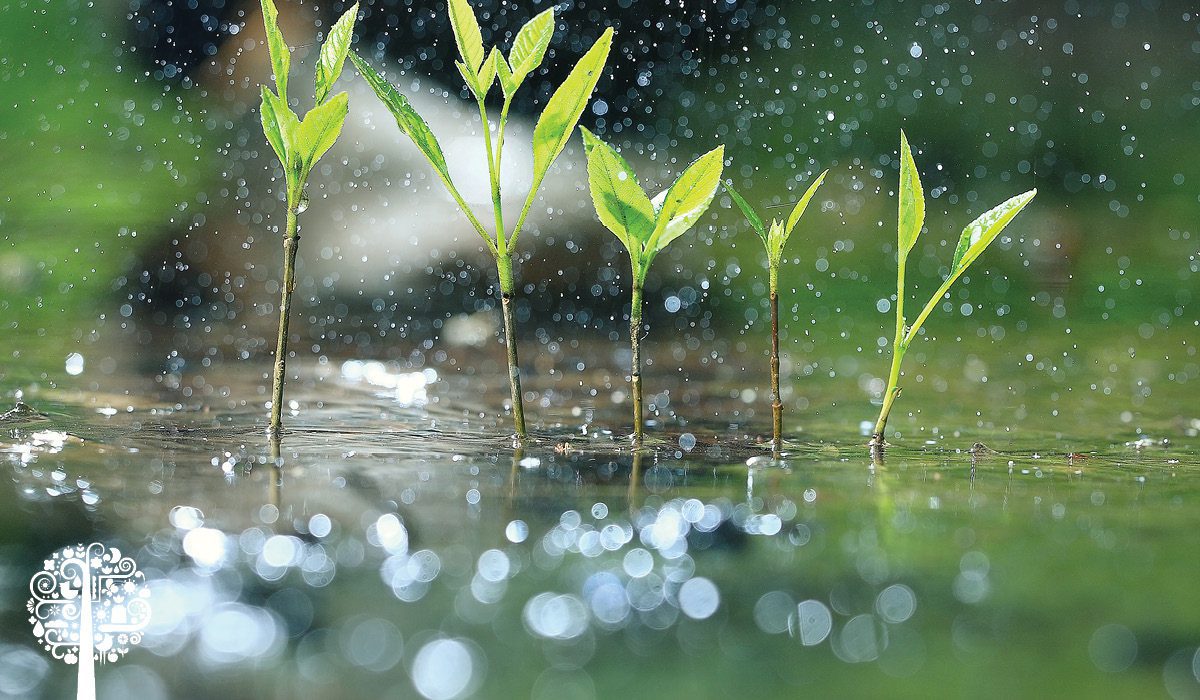Drought-proofing a garden is one issue many gardeners have to tackle at some point, but an equally problematic issue can be when you get too much rain! Apart from the flooding events themselves, there is the follow-up issue of soaring humidity levels as the water dissipates, something greenhouse and indoor growers can’t even escape. What can you do to give your garden a fighting chance in these less-than-ideal scenarios? As they say, an ounce of prevention is worth a pound of cure.
Drainage and Aggregates
Make sure your plants have adequate drainage. Your soil and growing media should be free-draining, along with your chosen containers and planting beds. Containers need sufficient drainage holes; consider adding a few more than what they had when you bought them. Garden beds should have generous amounts of aggregate material beneath them to allow for rapid draining.

If you live in an area likely to experience heavy rain events, choosing a media with a coarse aggregate size will allow for water to dissipate. In large containers, this is especially important, as blends with a fine grain size tend to compact and become saturated over time. This could mean the crucial difference of dry time between root recovery and root rot in an extreme rain event.
Ideally, the drainage aggregates should be predominantly based on materials that do not easily stratify in the soil. While perlite benefits from being very light and well-draining, it is also prone to float, meaning it works its way to the top in heavy flooding. Using it in conjunction with materials that tend to stay put is an ideal scenario and will often aid in firming the position of perlite. Pumice, scoria, biochar chunks, diatomite granules, and expanded clay balls all make fine, long-lasting choices to use alongside lighter materials.
Site Preparation and Mulch
Prepare your outdoor site well in advance; this includes identifying any spots that could be potential water-wells in the garden and taking steps to fix them by building drainage trenches and terracing areas.
Moisture-retaining mulch may seem counterintuitive to apply when dealing with excessive rains, but doing so can mean preventing precious topsoil from washing away. It also protects the surface feeder roots from harsh downpours that can damage them.
Fertilizers and Enzymes
Your actions in the wake of an extreme rain event can also make or break your garden’s recovery. Many may believe all of the fertilizer has washed away and want to add more immediately. However, the plant’s roots are in a recovery state and are likely suffering from low oxygen conditions.

Instead, give the garden some time. Soil inoculants are especially helpful in repopulating friendly microbes, which promote root recovery. You can mix these with the barest minimum of water. Some dry formulations can be applied directly to the soil surface, appealing if the earth is already soggy.
The low oxygen conditions of excessive rain mean less than happy roots; a good-quality enzyme formulation can go a long way to clearing up dead material and turning it into valuable byproducts. Less dead and rotting material hanging around means much less chance for diseases to set in.
Indoor and Greenhouse Growers
Hopefully, indoor growers have decent climate control, but it is best to triple-check dehumidifiers after heavy rains to make sure they’re handling any extra moisture. Have a sump pump on standby in case of flooding. Floods also tend to mean power outages, so ensuring your backup supply is in functioning order is a good call. Greenhouse growers should raise their airflow and be on the lookout for any fungal diseases, making sure to have appropriate curatives on hand.
We are all at the mercy of nature’s elements at all times, but careful planning is the difference between damage and outright disaster.